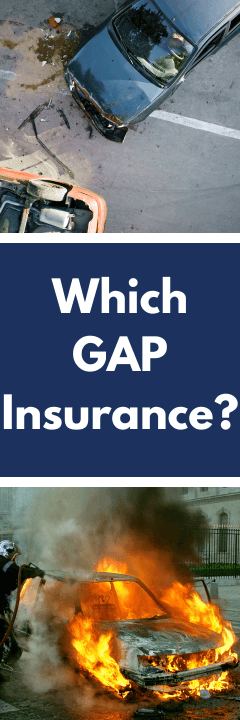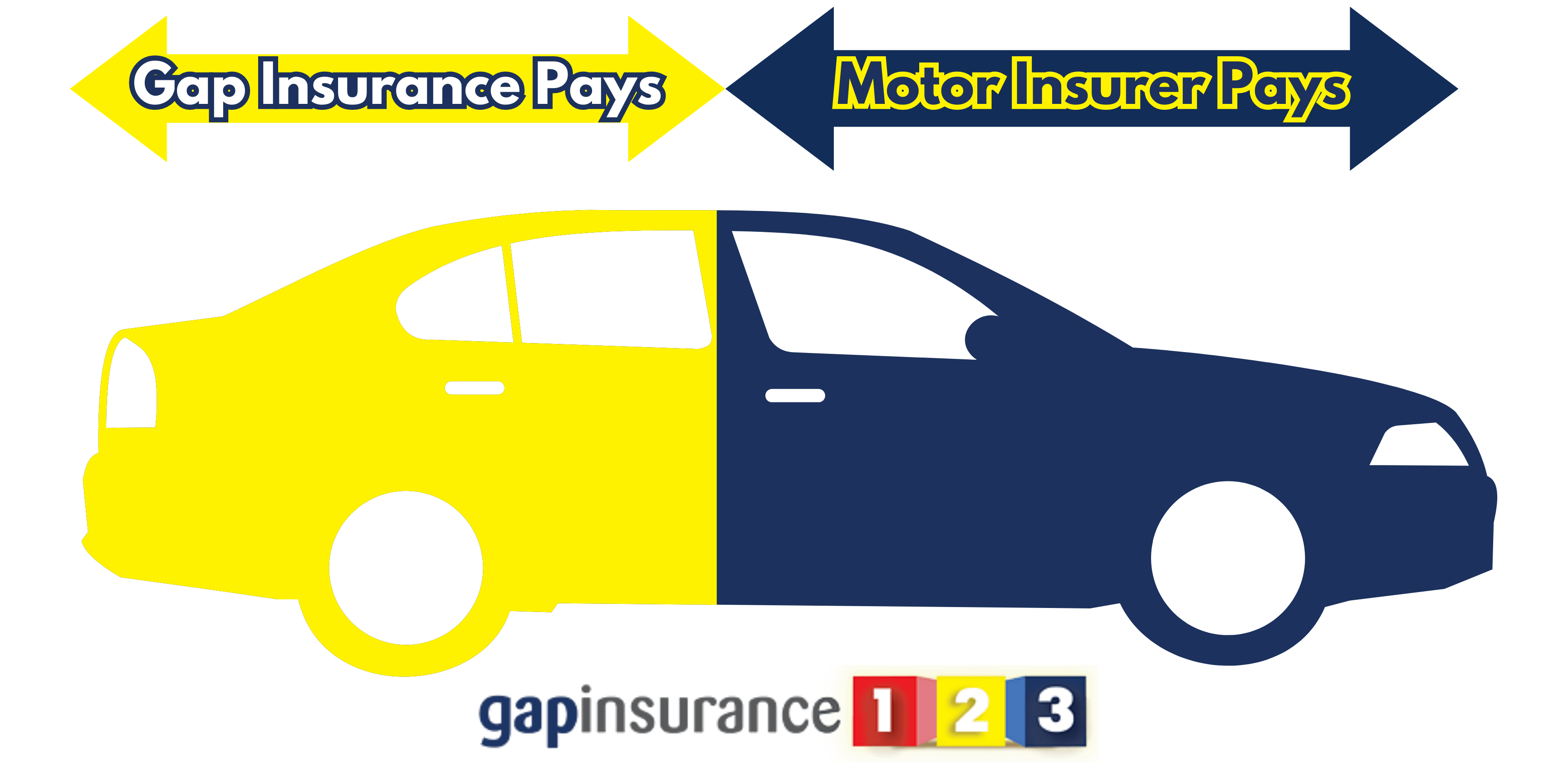Call Monday-Friday 9am - 6pm Closed Saturday & Sunday
Please select some policies.



Need Help? Calling from a mobile please call 0151 647 7556
0800 195 4926 / 0151 647 7556Do you have a question? or need help?
Call Monday-Friday 9am - 6pm Closed Saturday & Sunday,
GAP insurance - it's a term you've probably encountered when buying or leasing a vehicle. But what is GAP Insurance, and why does it matter?
Simply put, GAP Insurance (Guaranteed Asset Protection) is designed to protect you financially if your vehicle is stolen or deemed a total loss following an accident, fire or flood.
In this article, we will compare GAP insurance types available, shedding light on the differences and helping you make an informed decision.
Lease and Contract Hire GAP Insurance
Return to Invoice GAP Insurance
Vehicle Replacement GAP Insurance
Agreed Value or Return to Value GAP Insurance
Lease Top Up GAP or Lease GAP Extendable GAP Insurance
Comparing GAP Insurance cover to find the best solution for you.
The first thing to clarify is that different types of GAP Insurance are available. Why? The range of GAP cover available is simply because they provide different levels of protection if you need to make a claim. 
Here we will describe what each type of GAP Insurance policy does, what it may be most suitable for and what it is not best used for. At the end of this, you should be able to buy GAP Insurance safely, knowing what you have purchased.
Also known as:
Shortfall GAP
Finance Shortfall GAP
Outstanding Finance GAP
What Finance GAP Insurance covers
In the event of a total loss or theft, Finance GAP covers the difference between your motor insurer's payout and the outstanding finance settlement on a linked finance agreement.
Finance GAP insurance can be a lifesaver when you've financed a vehicle through a linked finance agreement to the car.
This type of coverage aims to bridge the "gap" between your outstanding finance balance and the vehicle's market value at the time of loss. It keeps you from having to pay for the difference yourself.
Your car is written off, and your motor insurer pays out the current market value at £8,000.
Your outstanding finance settlement on a hire purchase agreement is £10,000.
Finance GAP Insurance pays the difference between the motor insurer's settlement (£8,000) and the outstanding finance settlement (£10,000)
FINANCE GAP PAYS £2,000
New and used cars that are on Hire Purchase or Personal Contract Purchase finance
Where a small or no deposit in the finance agreement
Where you have financed over an extended period (4 or 5 years)
New and used cars owned outright
New and used vehicles secured on an unsecured loan (e.g. a bank or personal loan)
Where a large deposit has been put down on a PCP or HP finance agreement.
Finance Shortfall GAP causes plenty of confusion among UK consumers. It can be assumed that if you have finance on the car, the Finance GAP is what you will need. However, this is rarely the case.
Finance GAP can only cover a shortfall between the settlement provided by your car insurer and the settlement required on your secured finance agreement. However, having a shortfall is less common than you may think.
For example, if you put a large deposit into a secured finance deal, then the chance that you get a shortfall situation is much lower than if you put no or only a small deposit.
Why?
You borrow far less than the purchase price. As your car depreciates from the purchase price, you also make payments on your finance arrangement. As your vehicle depreciates, so, your finance settlement also drops.
The chance you could be in negative equity lessens with a large deposit. The Outstanding Finance GAP has nothing to cover if there is no shortfall.
Finance GAP will cover balloon payments on a PCP as a minimum.
As Finance GAP only benefits a few consumers, many GAP Insurance providers do not offer it.
Also known as:
Lease Shortfall GAP
Contract Hire GAP
Shortfall GAP Insurance
Guaranteed Asset Protection
Leasing or contract hiring a vehicle? Then Lease and Contract Hire GAP Insurance is worth considering. This coverage protects against the financial burden of a prematurely terminated contract if the car is written off. 
Whilst your motor insurer may provide a market value settlement to you for the car value, will that be enough to clear the lease?
In the event of a total loss following an accident, fire, flood or theft, the Contract Hire & Lease GAP Insurance settles the difference between the motor insurer settlement and the amount still owed to the leasing company for the outstanding rental payments.
In addition, the Better Lease GAP products also offer cover for 'deposit protection'. This is the advanced rental you put down as the first payment on the contract. If you take this option, you can recover the advanced rental cost to use as a deposit on your brand-new replacement car.
You lease a brand-new car for four years. You have an advanced rental payment of £3,000 and 47 monthly rentals of £500.
Your car is written off, and your motor insurer pays out the current market value at £15,000.
Your outstanding lease settlement is £20,000.
The Lease GAP pays the difference between the motor insurer's settlement (£15,000) and the outstanding lease settlement (£10,000). The £3,000 advanced rental is also covered if the optional Deposit Protection was taken.
LEASE GAP PAYS £5,000 to clear the lease shortfall plus an additional £3,000 to the leaseholder for their advanced rental payment.
New and used cars that are secured via a Personal or Business lease with no option to own
Optional Deposit Protection can be taken where an advanced rental payment will be made.
New and used cars owned outright
New and used cars secured on an unsecured loan (e.g. a bank or personal loan)
New and used cars secured on a Hire Purchase or Personal Contract Purchase agreement.
Any finance arrangement where you can own or opt to own the vehicle
In truth, Lease and Contract Hire GAP has a very specific use. It is designed just for lease arrangements where there is no vehicle ownership option. These are rental agreements where the finance company remains the registered keeper and owner of the vehicle.
The vehicle must be returned to the leasing company at the end of the lease term.
If the leased vehicle becomes a 'write-off' due to being in an accident, stolen, suffering a fire or a theft, then you will still have to pay off the lease.
If there is a shortfall between the motor insurers' settlement and the lease settlement, then a Lease & Contract Hire GAP policy can cover that difference.
If you have paid an advanced rental or deposit payment at the beginning of the lease, you can take the optional deposit protection to cover some or all of this figure. In the event of a claim, you can recover this amount to use as a deposit on your replacement vehicle.
The difficulty with a lease is that it is difficult to predict exactly what your lease settlement may be at any time. In the event of a write-off, you could be faced with a bill and still have to get a replacement car. Lease and Contract Hire GAP can help prevent that problem from becoming a reality.
Also known as:
RTI GAP Insurance
Back to Invoice GAP
Retail Price Protection
GAP Insurance RTI
Suppose your vehicle is written off or stolen. In that case, the Return to invoice gap covers the difference between the market value settlement your car insurance company provided and the price you originally paid.
So in combination with the motor insurance settlement, a Back to Invoice top-up from the GAP Insurer can provide the total invoice price paid back to the insured. 
This means that if you buy the car outright, then you get your entire investment back.
If you have outstanding finance, you can pay back where you owe money. Once this is paid on the previous car, the remainder is yours to secure a replacement car.
You buy a new car by way of a 3-year PCP finance agreement. The vehicle invoice price is £24,500. You put down a deposit of £4,000, 35 monthly payments of £400 and a final balloon payment (GFV) of £8,500.
Your car is written off two years later, and your motor insurer pays out the current market value at £10,000.
Your outstanding PCP settlement is £13,000.
The RTI GAP pays the difference between the motor insurer's settlement (£10,000) and the original invoice price (£24,500).
RTI GAP PAYS £14,500 to return to the original invoice price (£24,500). This allows the insured to pay off the finance settlement (£13,000) and use the remaining £11,500 for a deposit for a new car.
New and used vehicles purchased outright from a VAT-registered motor dealer.
New and used vehicles purchased via HP, PCP or a personal loan from a VAT-registered motor dealer.
Vehicles purchase privately
Return to Invoice GAP is the most 'traditional' style of GAP Insurance simply because it is the standard type of cover offered at motor dealers. RTI is also the simplest type of GAP cover, as you always know the original price paid for the vehicle.
RTI is suitable for cash buys or vehicles bought via HP or PCP.
Also known as:
VRI GAP Insurance
Replacement GAP
Vehicle Replacement Insurance
Vehicle Replacement GAP Insurance is considered the most comprehensive form of GAP cover, designed to provide the maximum value to the policyholder.
VRI GAP Insurance can cover the difference between the motor insurer's settlement in the event of a total loss and the cost of replacing the vehicle with an equivalent like-for-like replacement car. This equivalent vehicle will be the same age, specification and mileage as your car was on the day you bought it.
So if you bought a brand new car, it would be the equivalent brand new car as a replacement. If the vehicle was two years old, with 15,000 miles when you bought it, then it will be the comparable 2-year-old, 15,000 examples, when you make a claim.
This means you can claim the cost of the like-for-like vehicle, even if this has gone up in value.
You buy a new car by way of a 4-year HP finance agreement. The vehicle invoice price is £35,000. You put down a deposit of £10,000 and 48 monthly payments of £575.
Your car is written off two years later, and your motor insurer pays out the current market value at £20,000.
Your outstanding HP settlement is £13,000.
The equivalent brand-new replacement vehicle is now £38,000 at the point of claim.
The VRI GAP pays the difference between the motor insurer's settlement (£20,000) and the original invoice price (£38,000).
VRI GAP PAYS £18,000 to match the new car replacement cost (£38,000). This allows the insured to pay off the finance settlement (£13,000) and use the remaining £25,000 for a deposit for a new car.
Purchase of new cars where a heavy discount has been applied. For example, when the current model is due to be upgraded, the manufacturer discounts current stock to sell them before the updated model arrives.
New and used vehicles purchased outright from a VAT-registered motor dealer.
New and used vehicles purchased via HP, PCP or a personal loan from a VAT-registered motor dealer.
Vehicles purchase privately
New or used vehicles where there is less chance of the equivalent replacement car being more expensive. This could be where a new model has just been launched, and no discounts are available.
Vehicle Replacement GAP Insurance is the best type of GAP Insurance available for new cars and vehicles today. This is because it looks after the current vehicle's depreciation and any inflationary costs in terms of replacing it.
Of course, being as comprehensive as VRI is, it tends to be the most expensive of all the GAP policies available.
Also known as:
Return to Value GAP Insurance
This style of GAP Insurance is different to many of the other types listed above, as it does not need to be linked to the vehicle being purchased at a VAT-registered motor dealer; a VAT Invoice or connected finance agreement is not required at the claim time, and it can cover privately purchased vehicles.
Agreed Value GAP is designed to cover between the motor insurer's settlement, at the point of total loss, and the Agreed Value of your car when the policy was purchased. An industry-recognised valuation service like Glass' Guide determines this' agreed value'.
This type of gap insurance is relatively niche and rare. It is designed to cover between the motor insurer settlement at the point of loss and the settlement amount on a linked finance agreement (HP or PCP). However, within that finance settlement, there will be an allowance for an amount of 'negative equity' carried from a previous finance agreement.
So, for example, if you part exchange a vehicle where you owe £2,000 more than the vehicle value, then in some circumstances, this £2,000 can be added to the new finance agreement for your replacement car. This is carried over 'negative equity'.
Where a car is taken on a lease, there can be reasons why the leaseholder may extend the lease at the end of the initially agreed term. Following the post-Covid pandemic issue over microchip shortage for car manufacturers, the recent problem with vehicle supply has seen this happen with many who have a vehicle on a lease. 
Unable to find a replacement vehicle means that many leases have been extended.
Some GAP Insurance providers have offered an extendable or lease top-up GAP product.
This policy, like the standard lease gap, can cover any shortfall between the motor insurers' settlement and the outstanding lease settlement in case of a total loss.
Last, but not least, there's Top Up GAP Insurance. This annual, renewable product complements your existing comprehensive insurance policy. It does so by topping up the payout by 25%, capped at a maximum of £10,000.
This is a good option if your RTI or VRI policy has run out and you are looking for some cover moving forward. It may not provide the settlement size that an RTI or VRI product may, but it can provide a valuable top-up if you have outstanding finance or costs in replacing the vehicle after a write-off.
So which is the best type of GAP Insurance?
There's no one-size-fits-all answer to this question. The best GAP insurance depends on factors like your vehicle's age, financing method, and personal preferences.
To find the right fit, assessing your circumstances and comparing quotes and policies from various providers is essential.
Navigating the world of GAP insurance can be daunting, but understanding the different types is the first step in making an informed choice. By considering your specific needs and circumstances, you can select the correct type of coverage for you.
No, GAP insurance is not mandatory. However, it can be a valuable addition to your insurance coverage, providing extra financial protection in case of total loss or theft of your vehicle.
It's generally best to purchase GAP insurance when you buy or lease a new vehicle, as depreciation is highest during the first few years of ownership. However, GAP insurance may still be beneficial for used cars, depending on your circumstances.
Yes! While GAP insurance is more common for new vehicles, it's also possible to find coverage for used cars. Just remember the value of your car and its depreciation rate will impact the cost and availability of GAP insurance.
Research is key! Compare quotes and policies from various insurers, and consider factors like coverage limits, deductibles, and customer reviews. Consult with insurance professionals, like GAPInsurance123, if you need personalised advice.
Typical motor insurance policies only cover your vehicle's current market value, not the outstanding loan or lease balance. Some comprehensive policies may offer 'new for old' replacement cover for a limited period, so reviewing your policy carefully is essential.

Most GAP insurance policies can be cancelled, but the process and refund eligibility may vary between providers. Review your policy terms and consult with your insurer for specific details.
GAP insurance coverage duration varies depending on the policy and provider. Generally, GAP Insurance policies last for a fixed, pre-selected term of between 1 and 5 years.
The cost of GAP insurance can vary widely, depending on factors like the vehicle's value, type of cover and where you buy it from.
GAP insurance policies typically can be transferred from one vehicle to another. However, eligibility and purchase price criteria can come into play. You will need to check your cover for options.
Like all insurance policies, there are terms, conditions and eligibility criteria that must be met for a GAP Insurance claim to be valid. Examples of where GAP Insurance will not pay include:
Buying a Lease GAP policy when you buy the vehicle outright
Where your main motor insurer does not cover the incident that leads to your vehicle being written off.
Where the vehicle on cover has been declared a total loss previously.
There are more situations that can mean a GAP claim is turned down. Check the terms of the policy and ask questions if you are not sure.
When filing a GAP insurance claim, you'll need to provide documentation, including but not limited to:
Confirmation from your motor insurer that they have written the vehicle off, and the settlement they have offered
Confirmation you are the registered keeper of the vehicle or the lease holder for a lease.
A copy of the finance agreement (if one has been taken) or the purchase invoice (for an outright purchase)
A copy of your finance settlement letter
A copy of your motor insurance certificate
A copy of your GAP Insurance certificate
A crime reference number if the vehicle was stolen
Generally, GAP insurance does not cover negative equity rolled over from a previous loan or lease. It only covers the difference between your vehicle's current market value and the outstanding balance of the loan or lease related to the insured car.
Unlikely. GAP insurance may not cover fees like excess mileage, late payment penalties, or other charges associated with your loan or lease.
It's important to review your policy documents and consult with your insurer to understand what fees and penalties are included or excluded from coverage.
Remember, when it comes to GAP insurance, knowledge is power. Understanding the ins and outs of different policies and providers will help you make an informed decision that best suits your needs.
At GAPInsurance123, we are part of a group of online brands offering GAP Insurance since 2010. We have access to products from several GAP Insurers and probably have access to the most extensive suite of GAP Insurance products in the UK.
If you need any help, please do not hesitate to contact us. It is unlikely anyone else in the UK will know more about GAP Insurance than us!
Published 30/4/23, written by Mark Griffiths